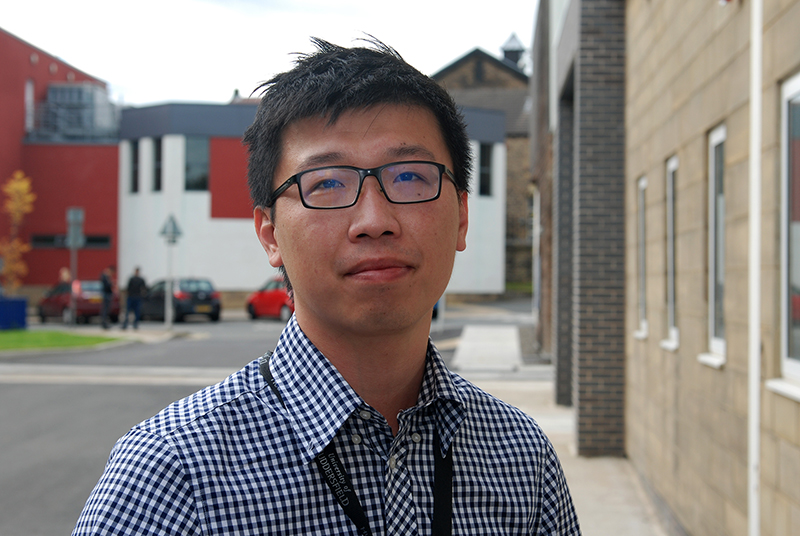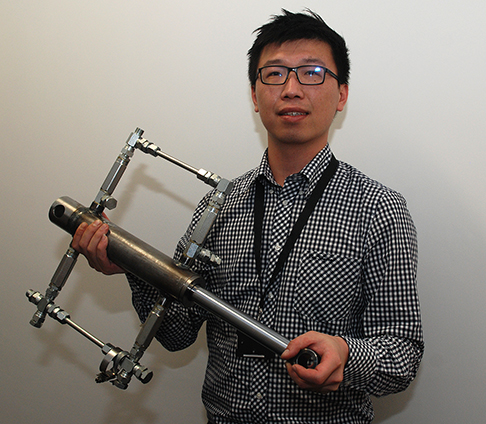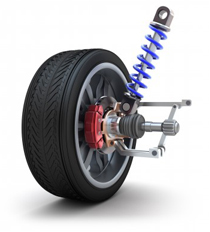Breakthrough in harvesting energy from automotive shock absorbers
 Huddersfield Researcher Dr Ruichen Wang
Huddersfield Researcher Dr Ruichen Wang
Thu, 20 Oct 2016 11:01:00 BST
“…a full-size, ready-to-test prototype has already been constructed…”
BOOSTING the fuel efficiency of motor vehicles by “harvesting” the energy generated by their shock absorbers and feeding it back into batteries or electrical systems such as air conditioning has become a major goal in automotive engineering. Now, a University of Huddersfield researcher has made a breakthrough by designing a new system and constructing a prototype that is ready for real-world testing.
 Ruichen Wang carried out the project to obtain his doctorate at the University and has published his findings. The article, in the journal Energies, is titled Modelling, Testing and Analysis of a Regenerative Hydraulic Shock System. It provides a summary of current progress in the field of vehicle energy harvesting and a detailed account of the theory and the practical development of his device, designed for installation in a heavy good vehicle.
Ruichen Wang carried out the project to obtain his doctorate at the University and has published his findings. The article, in the journal Energies, is titled Modelling, Testing and Analysis of a Regenerative Hydraulic Shock System. It provides a summary of current progress in the field of vehicle energy harvesting and a detailed account of the theory and the practical development of his device, designed for installation in a heavy good vehicle.
Dr Wang, who is from Qingdao in eastern China, moved to PhD research after completing his mechanical engineering degree at the University of Huddersfield. His doctoral supervisors, Professor Andrew Ball and Dr Fengshou Gu, suggested that he should work on an energy recovery device, addressing the issue that most of the energy contained in a vehicle’s fuel is wasted.
Considerable work has already been done harvesting energy from brake systems, so Dr Wang decided to focus on the suspension.
After working on the mathematics, computational analysis and design of his device, Dr Wang personally constructed his full-size, ready-to-test prototype (pictured right) – a demonstration of practical engineering skills that impressed his supervisor Professor Ball.
“It has resulted in is a truly realisable application for energy recovery from a typical road vehicle. Ruichen developed a theoretical predictive model and carried out the empirical testing, and the two of them correlate beautifully,” he added.
Harvested energy can be used for any auxiliary purpose in a vehicle, said Professor Ball, and in hybrids it could recharge the electric motor.
 The next stage is to work with an industrial partner to install and test Dr Wang’s system in a road-going vehicle. But the technology has a wide application and there is every possibility that it could be adapted for rail vehicles – especially as Dr Wang has taken up a full-time research post at the University of Huddersfield’s Institute of Railway Research (IRR).
The next stage is to work with an industrial partner to install and test Dr Wang’s system in a road-going vehicle. But the technology has a wide application and there is every possibility that it could be adapted for rail vehicles – especially as Dr Wang has taken up a full-time research post at the University of Huddersfield’s Institute of Railway Research (IRR).
Dr Paul Allen, who leads the IRR’s Centre for Innovation in Rail, explains: “We are now exploring how Dr Wang’s energy harvesting and modelling techniques can be applied to developing low-cost self-health monitoring dampers for railway vehicles, a project which already has two industrial partners.”
- Modelling, Testing and Analysis of a Regenerative Hydraulic Shock Absorber System Wang by Ruichen Wang, Fengshou Gu, Robert Cattley, and Andrew Ball is in Energies 2016, 9, 386.







